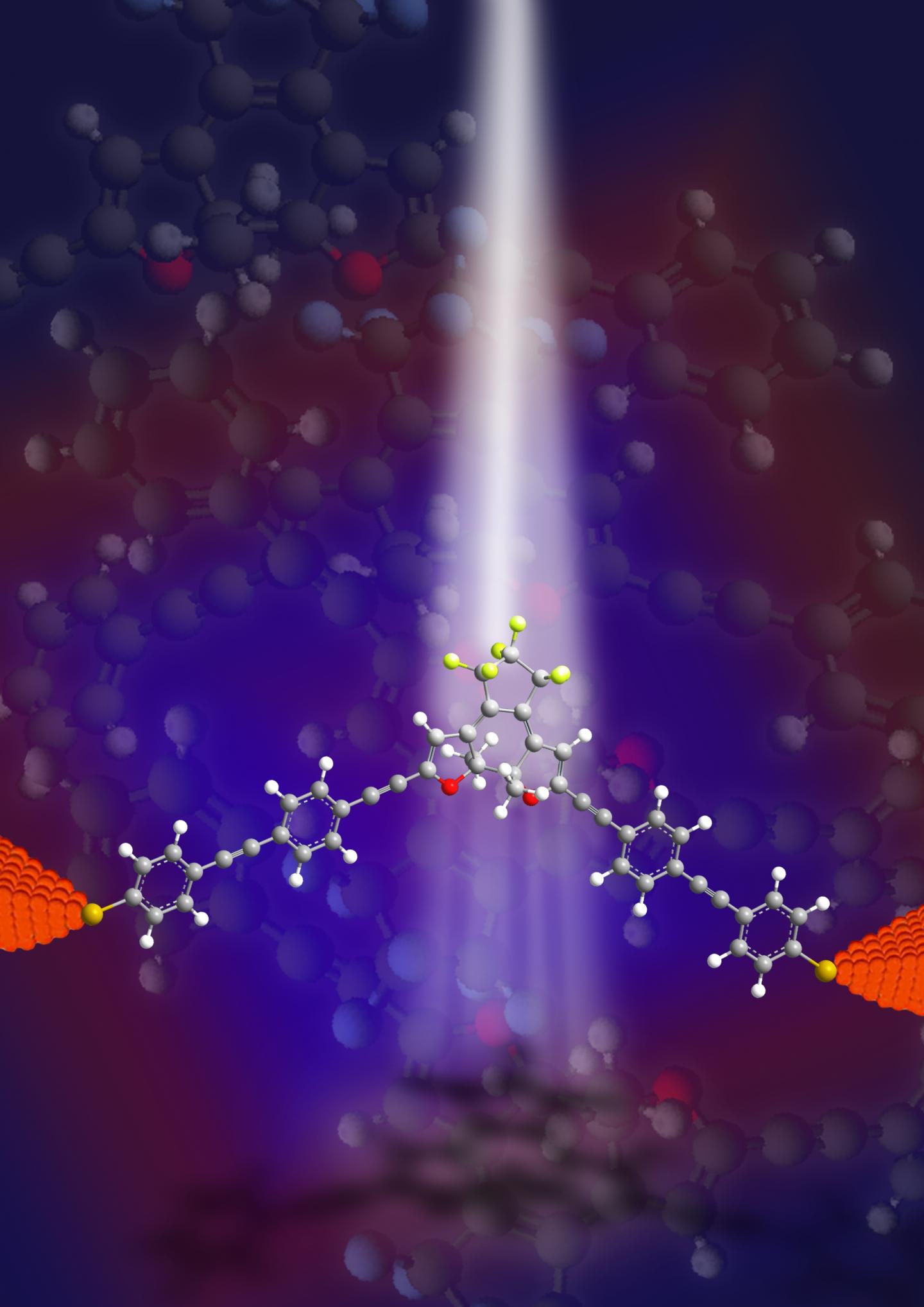How to create a computer in a test tube
April 24, 2015

A light beam switches a single molecule, using gold electrodes attached to the diarylethene molecule (credit: HZDR/Pfefferkorn)
How many individual molecules does it take to automatically create a circuit? The answer: one, if you use light to switch it on and off, say scientists at Helmholtz-Zentrum Dresden-Rossendorf (HZDR) and the University of Konstanz.
The trick: a strong bond between individual atoms that weakens in one location and forms again precisely when energy is pumped into the structure.
The first molecular switch
These molecular electronics devices work in a fluid in a test tube, not on a silicon slab. Jannic Wolf, a chemist at the University of Konstanz, discovered that a particular diarylethene compound is an eligible candidate.
The advantages of this molecule:
- It rotates very little when a point in its structure opens.
- It has two “nanowires” that can be used as contacts. It’s an insulator when open and becomes a conductor when closed.
The diarylethene is attached at the end of the nanowires to electrodes so that the current can flow. For that, they used extremely thin tips made of a few gold atoms.
When a beam of light then hits the molecule, it switches from its open to its closed state, resulting in current flowing. “I believe that we have succeeded in making an important step toward a genuine molecular electronic component,” said Erbe.
Well, almost. Switching off doesn’t work yet. But they’re working on it.

Irradiation with ultraviolet light causes a diarylethene molecule to switch from the off state to the on state (credit: Torsten Sendler et al./Advanced Science)
Replacing billion-euro fabs
Artur Erbe, a physicist at the HZDR, is convinced that in the future, molecular electronics will open the door for novel and increasingly smaller (and more energy-efficient) components or sensors. “Single molecules are currently the smallest imaginable components capable of being integrated into a processor,” he suggests.
They scientists are also working on self-organization. “DNA molecules are, for instance, able to arrange themselves into structures without any outside assistance. If we succeed in constructing logical switches from self-organizing molecules, then computers of the future will come from test tubes,” predicts Erbe.
The big advantages: billion-euro manufacturing plants that are necessary for manufacturing today’s microelectronics could be a thing of the past; and very little energy will be required.
The Technische Universität Dresden, Leibniz-Institute of Polymer Research Dresden (IPF), the Fraunhofer Institute for Ceramic Technology and Systems (IKTS) and the NaMLab gGmbH are also involved in the research.
More in an open-access paper in the journal Advanced Science.
Abstract of Light-Induced Switching of Tunable Single-Molecule Junctions
A major goal of molecular electronics is the development and implementation of devices such as single-molecular switches. Here, measurements are presented that show the controlled in situ switching of diarylethene molecules from their nonconductive to conductive state in contact to gold nanoelectrodes via controlled light irradiation. Both the conductance and the quantum yield for switching of these molecules are within a range making the molecules suitable for actual devices. The conductance of the molecular junctions in the opened and closed states is characterized and the molecular level E 0, which dominates the current transport in the closed state, and its level broadening Γ are identified. The obtained results show a clear light-induced ring forming isomerization of the single-molecule junctions. Electron withdrawing side-groups lead to a reduction of conductance, but do not influence the efficiency of the switching mechanism. Quantum chemical calculations of the light-induced switching processes correlate these observations with the fundamentally different low-lying electronic states of the opened and closed forms and their comparably small modification by electron-withdrawing substituents. This full characterization of a molecular switch operated in a molecular junction is an important step toward the development of real molecular electronics devices.